Nikon Nikkor AF-S 18-35 mm f/3.5-4.5G ED
3. Build quality
In the photo below the tested lens is positioned between two Nikkors: the 16–35 mm f/4.0 VR and the AF-S 24–70 mm f/2.8.
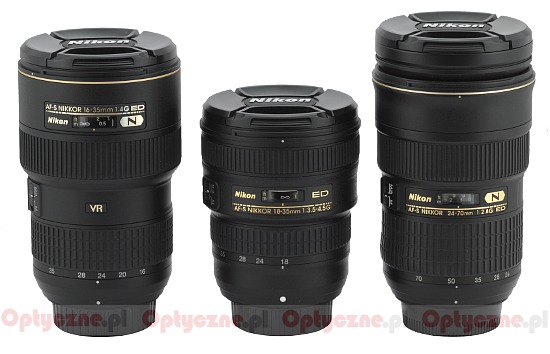 |
Please Support UsIf you enjoy our reviews and articles, and you want us to continue our work please, support our website by donating through PayPal. The funds are going to be used for paying our editorial team, renting servers, and equipping our testing studio; only that way we will be able to continue providing you interesting content for free. |
- - - - - - - - - - - - - - - - - - - - - - - - - - - - - - - - - - - - - - - - - - - - - - - -
The Nikkor AF-S 18–35 mm f/3.5–4.5G ED starts with a metal mount which surrounds contacts and a rear element, 19 mm in diameter. At 18 mm the rear element is situated on the same level as the contacts, on passing to 35 mm it hides inside the tube almost 2.5 cm deep. The fact that the interior of the tube from the side of the mount is blackened and matted properly should be emphasized. Only if you look very deep inside you can see a crack between the rim of the rear element casing and the tube through which you can glance some screws and inner construction parts.
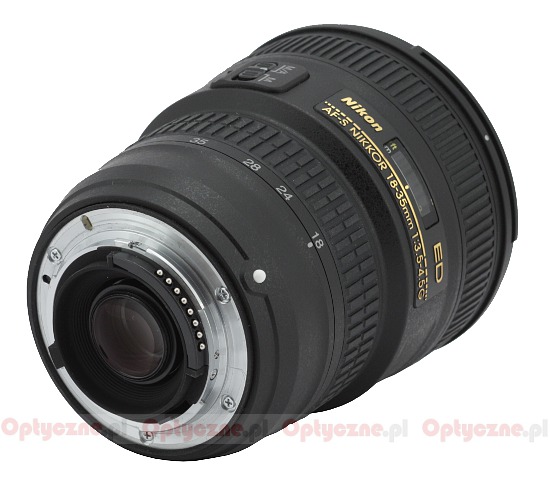 |
The proper casing of the lens is already made of plastics and a white dot, making the alignment with a camera easier, and a serial number of the lens are among its first significant features. Then there is a zoom ring, 19 mm wide, most of which occupied by rubber ribs. Under it you can find focal length markings at 18, 24, 28 and 35 mm. The ring moves smoothly and is well-damped.
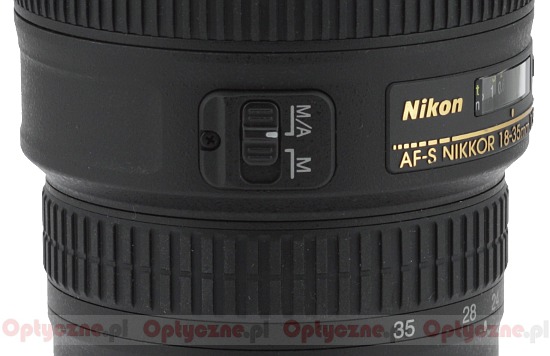 |
Further on you find another immobile part of the casing on which there is a plate with the name and the parameters of the lens; they surround a distance scale behind a window, expressed in meters and feet. On the left you see a focusing mechanism mode switch (M/A-M). On the opposite side of the distance scale you find the basic parameters and properties of the lens given once again and also the information that it was produced in China.
A manual focus ring is the next part of the casing – it is covered by rubber ribbing and 15 mm wide, with the working range of about 90 degrees. I’ve noticed for some time now that manual focus rings of most of Nikkors we’ve been testing have slacks and it concerns even the most expensive devices, produced by that company. The Nikkor’s AF-S 18–35 mm f/3.5–4.5G ED manual focus ring is not flawless as well – in fact its slack is so pronounced that, while changing the direction of the turn of the ring, you have to move two ribs before the ring ‘catches’ and starts shifting the distance scale. I am really puzzled here: all other companies can produce rings which work properly (apart from some accidental slip-ups of course) but finding a contemporary produced Nikkor with a ring which moves without any slacks is as probable as a significant win on the lottery…
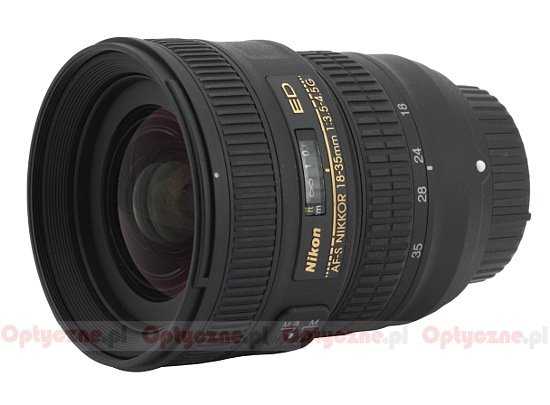 |
Behind the manual focus ring you see a hood mount. A front element is noticeably convex, with a diameter of 48 mm. It is surrounded by a non-rotating filter thread, 77 mm in diameter. The element moves – it is hidden the deepest inside the casing at 28 mm and its most shallow position can be observed at 18 mm.
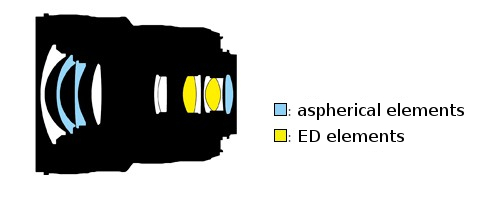 |
When it comes to the optical construction you deal here with 12 elements positioned in 8 groups (two ED elements and three aspherical ones among them). Inside, there is also an aperture with seven blades which can be closed down to a value of f/22 at the shortest focal length and f/29 at the longest focal length.
Buyers get also both caps, a petal-type hood and a soft pouch in the box.
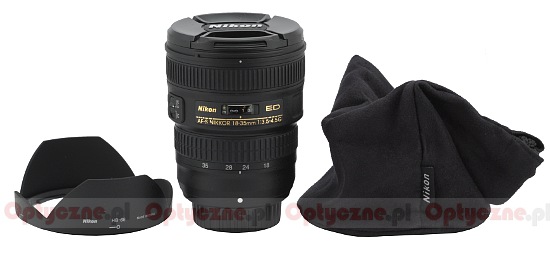 |






